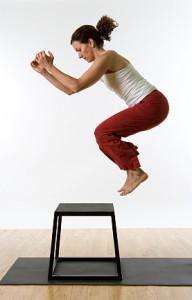
This week’s Throwback Thursday piece is “Treating Fitness Clients Like Athletes –The Right Way Part 1”, written by Jesse Irizarry in February 4, 2013.
Ever watch a kid play in the park? If you have not ever taken the time do so, find a park and try not to look too creepy. You will notice that very few kids have flexibility, mobility or stability issues. They jump off of things and start sprinting at full speed at whim. You will find these kids all look pretty athletic. Sure, some may possess more natural ability to jump higher and run faster but, provided the kid is in good shape, most kids have the same athletic ability.
As we get older, our life choices either cultivate this athleticism or hinder it. Some of us stop running around and jumping strictly for fun and restrict it to when we play organized sports while others sit in front of a computer screen or a t.v. for entertainment and get stiff, immobile and lose kinesthetic sense as the years go by.
While we may all start out as athletes, most of us definitely do not stay like that.
Not Everything Is Appropriate
Although we all start out pretty athletic, personal trainers need to understand that the majority of their clients are no longer athletes and should not be treated as such. I have seen too many personal trainers using advanced methods on general population clients that should be reserved for high level athletes
Most of the time, it is less important to create a well periodized program and more important to recognize muscular imbalances and teach basic movement patterns that the client may have lost due to years of inactivity.
There is a right way though to use some methods from the strength and conditioning world to progress fitness clients based their baseline level of fitness provided proper movement standards have been enforced and they have an acceptable baseline.
In this two part series, we will talk about three such methods of training that are often applied to programs for general population clients recklessly and how we can use them with fitness clients the right way.
The first is the use of plyometrics, specifically depth jumps.
Depth Jumps, Unsafe or Misunderstood
Depth jumps are often talked about as just another plyometric method without any consideration of how they were meant to be implemented.
While regular jump training such as doing bounds and skips develop jump force, depth jumps, if used correctly, along with drop jumps, are great methods to develop explosive strength, also known as speed-strength, and reactive strength for the fitness client. This is helpful even for geriatric clients because it has been said that the elderly tend to fall, leading to injury, because of a loss of explosive and reactive ability.
Like with other ideas, our “do more work” culture took depth jumps, along with drop jumps (also called altitude landings), and mixed them in with every other plyometric jump training known to man and decided to add them to every workout in every situation.
It needs to be understood that these two methods should be looked at as a tool to compliment their current training and not as a separate training system.
Abusing depth jumps can lead to injury and need to be used sparingly to prevent this along with overtraining. This means that random depth jumps shouldn’t be added in the middle or at the end of a heavy leg workout without consideration as to what work was done that day or that week or even that training cycle.
We understand that weight training needs to be slowly introduced and progressed but we forget to do so when implementing jumps.
Less Than First Thought
Starting off, clients only need to be doing plyometric exercises 1-2 times a week with only 2-3 sets of 4-8 jumps.
 After the client has progressed and developed, he can sometimes move up to 3 times a week if needed. Whether he opts to use two or three times a week he can do 3-4 sets of 6-10 jumps.
After the client has progressed and developed, he can sometimes move up to 3 times a week if needed. Whether he opts to use two or three times a week he can do 3-4 sets of 6-10 jumps.
There should also be plenty of rest time between sets — five to ten minutes — and thirty seconds rest between each rep.
Remember this isn’t for conditioning, this is to develop force output and plenty of rest is need to exert a maximal output.
This is a good time to do some mobility drills so you don’t end up standing around.
The height of the box also needs to be taken into consideration when performing these. An 18 inch box is the maximum that someone new to depth jumps should use. A lifter also shouldn’t even attempt an 18 inch box until they have built adequate strength in their legs. Some experts contend that the lifter should be able to squat 1.5 times their weight.
After some experience, a client can progress all the way up to a 42 inch box but should never go any higher than this. Excessively high boxes don’t elicit a healthy response and are more prone to cause injuries to the tendons and other soft tissues than anything else.
A good rule of thumb that a respected strength coach once taught me was use a height of a box that when you jump off of it you jump higher than if you were just jumping flat footed off of the ground.
Timing Is Everything
The use of depth jumps were planned out in a structured cyclic plan in Russian shock training method.
They were never intended to be performed in excess all year round.
In planning the use of these, drop jumps should be planned before performing depth jumps. Lower level drop jumps can be incorporated year round but you should only increase the reps and height of the box during a phase of training specifically devoted to building strength in the lower body.
Depth jumps can then be used after an accumulation phase of drop jumps to really work on maximum power and speed of movement for 3-6 weeks. After that, go back to doing a low volume of drop jumps from a smaller box again and just focus on strength and hypertrophy again. Do that for another 3-6 weeks and repeat the whole thing over again.
In Part 2 we will go over how to use a more advanced programming usually reserved for athletes and how to progress into this correctly.
- 0share
- 0Facebook
- 0Twitter
- 0Pinterest
- 0LinkedIn
FPO Crew
Latest posts by FPO Crew
- The Fitness Industry Voting Results - March 26, 2018
- Greg Zuffelato of Too Busy To Eat - November 7, 2016
- Karsten Jensen – The Flexible Periodization Method - October 17, 2016















